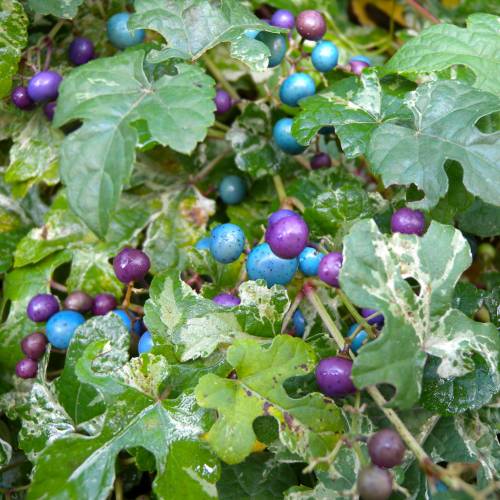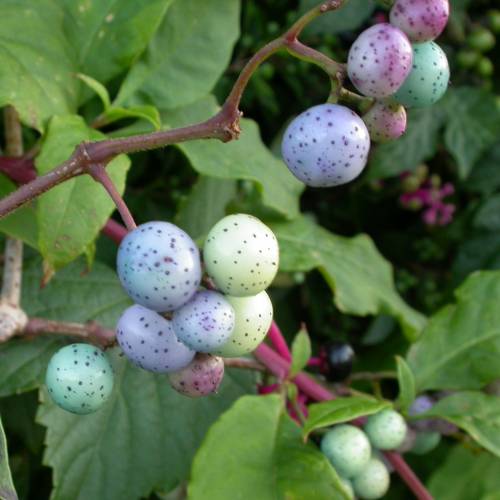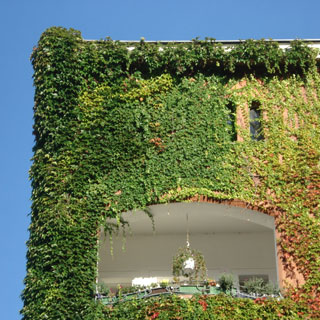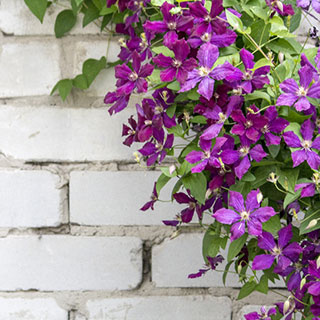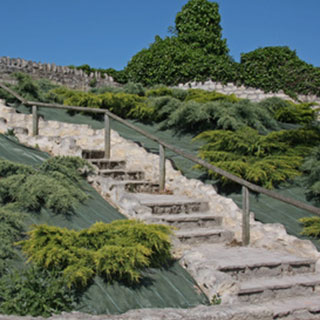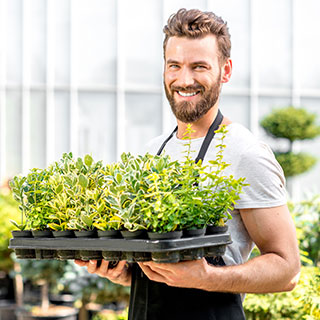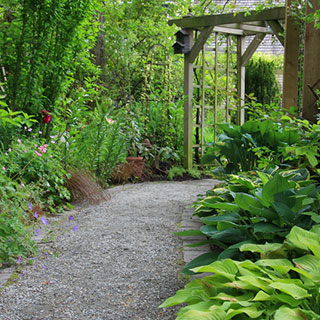
Plants
Variegated porcelain berry / Ampelopsis brevipedunculata 'Elegans'
-
6.71 € Variegated porcelain berry (Ampelopsis brevipedunculata 'Elegans')
7771J - Available
-
6.19 € Variegated porcelain berry (Ampelopsis brevipedunculata 'Elegans')
7771K - Available
-
5.15 € Variegated porcelain berry (Ampelopsis brevipedunculata 'Elegans')
7771L - Available
-
4.63 € Variegated porcelain berry (Ampelopsis brevipedunculata 'Elegans')
7771M - Available
-
0.40 € FERTILISER
7771A - Available
-
Geographical origin: China
Adult size: Height up to 4m, spread up to 4m
Foliage: Deciduous
Type of soil: Neutral, moist, well drained and humus rich
Climate: Hardy up to -10°C
Site: Partial shade
Planting density: 1/m2
Properties and uses:
The Ampelopsis ‘Elegans’ is a climber with tricoloured foliage. The young shoots are mottled with pink and white, then green and cream.
Its blossom is insignificant but full of nectar.
The beautiful fruiting period starts in the autumn, with berries of 5 to 8mm in diameter, green to start with, then glossy blue and pink to purple at maturity.
Birds love the fruits but note that they are toxic for Humans.
The Ampelopsis climbs thanks to its graceful tendrils on pergolas and shaded wire fences.
Jean-Michel Groult advises you
By suckers or tendrils ?
The classic Boston Ivy (Parthenocissus tricuspidata) clings onto its support with small adhesive pads. So, it will cling even along a flat wall. It will never grow roots in a crack unlike Common Ivy for example which cannot be left to grow on a damaged wall. You must not mistake the Boston Ivy which has simple leaves, with usually three leaflets, with the Virginia Creeper (or five-leaved Ivy, Parthenocissus quinquefolia). This one clings onto its support with tendrils which are a kind of filaments which curl around whatever they can find in turning into the air (very slowly!). This climber is not as covering as the classic Boston Ivy and needs a support like a trellis or wires to go up a wall.
There is also the Chinese Ivy (Vitis cognetiae), similar to the Virginia Creeper and used in the same way. Its large leaves cover a wall efficiently, provided that a support is installed to allow the plant to cling onto it with its tendrils, as it does not have adhesive pads.
Oh, the colours!
All the Parthenocissus have the particularity when autumn arrives to adorn bright colours, going from green to scarlet during long weeks. This splendour depends on the quantity of sun that they receive: in the shade, their colours can be less vivid. As for the autumnal colours of the Chinese Ivy, they are simply magnificent as each leaf becomes a true picture.
Planting and care
A Parthenocissus can be planted any time during the year, even though autumn and spring are the best planting periods. The action does not require any particular technic. The only thing to plan for is the stake, so as to guide the plant towards its support. Adding some compost and loam helps plants to take roots. Remember to water them in summer during the first two years following plantation, so as they get deeper roots. Once in situ, the Parthenocissus does not need any particular care excepted than pruning. This is done at the end of winter but you can also envisage doing it in summer. All you need to do is to shorten the branches which have become too long. Remember not to let your creeper make its way to the roof, under the tiles, as this can damage your roof waterproofness.

